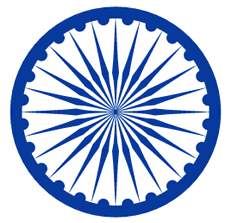Without using zeroes, counting would proceed like this
1
11
111
1111
11111
The number 1000 would need to be represented by 1000 digits instead of 4. In fact, due to the Indian method of counting, the storage (representation ability) for a number "n" came down to log(n).
What Indians have discovered is an exponential gain in data-storage. This significant invention made possible the basic arithmetic (multiplication, division etc) to be done in an exponentially less amount of time. It also opened roads for algebra, number theory, trigonometry and so on ..
0
1
10
11
100
The Counter is the most basic digital circuit. The key operation in counting is the toggle operator which reverses the digit on the right most side (called the least significant bit)
At first sight, it feels unnatural to count like this. But the genius of India has discovered this method of counting not less than 3000 years ago. I wish to claim that Indian philosophy takes its roots from this method of thinking.
In the Upanishads, the path of evolution is always a circle. However, a new dimension gets added every time a circle (yuga) gets finished. In this sense, the Indian thought is not fatalistic but progressive. The notion of progress has to be understood from the mode of counting.
In the Taitaríya Upanishad, five dimensions of human existence are mentioned - anna (matter), prána (life), mánasa (mind), vignána (understanding) and ánanda (bliss). Each of these dimensions is held in common with inanimate matter, plants, animals, men and enlightened men respectively.
The goal of scientific endeavour is to discover the ways of operation for each of the above 5 dimensions. In fact, ancient Indian philosophy is extremely accomodating for the theories of cosmos, relativity (matter) and evolution (life), that have been produced by centuries of scientific development.

Indian philosophy welcomes scientific endeavour to be made for understanding the remaining 3 dimensions as well. Currently, slow inroads are being made for undestanding Mánasa (mind) - through computer science. The future awaits similar revolutions to be made in the remaining dimensions. In India, progress and justice are truly symbolized by a wheel, as identified by the great emperor Ashoka, and as imbibed in the national flag. The wheel signifies the circular motion of progress through various terrains. It is also the symbol of the dawn of civilization.
I will also offer a surprising connection to Marxist thought from the Indian method of counting. Marx says that the society progresses through several stages where each stage is exactly the negation of its preceeding stage. Feudalism is the opposite of pastoralism, capitalism is the opposite of feudalism, communism is the opposite of capitalism etc. How is that possible ?
000 hunting-gathering
001 pastoral
010 feudal
011 capitalist
100 socialist
You see that the right-most digit of each stage is the negation of the previous stage. This is the Marxist method of understanding economic progress. (Need not be yours, if you don't use the binary system for counting)
You may also see that the right-most bits of socialism and feudalism are in alignment (both 0), thus supporting my earlier complaint that the communists in India are obstructing the end of feudalism from happening.
On a final note, the anecdote I narrated in my previous post also alludes to this method of counting.
This is patriotic
ReplyDeletehey thats very insightful!!
ReplyDeletethanks for your comments :)
ReplyDeleteI am getting to like your scientific approach. Idea of data compression through invention of zero is just perfect. Reading your blogs makes me feel bad and makes me think - How fool I am to miss the elementary things.
ReplyDeleteI would like to say my fav. quote here..
Dr. Watson "Amazing deduction Holmes.."
"Its Elementary Watson."
Smartness lies in finding this elementary stuff.
Great stuff and insight..